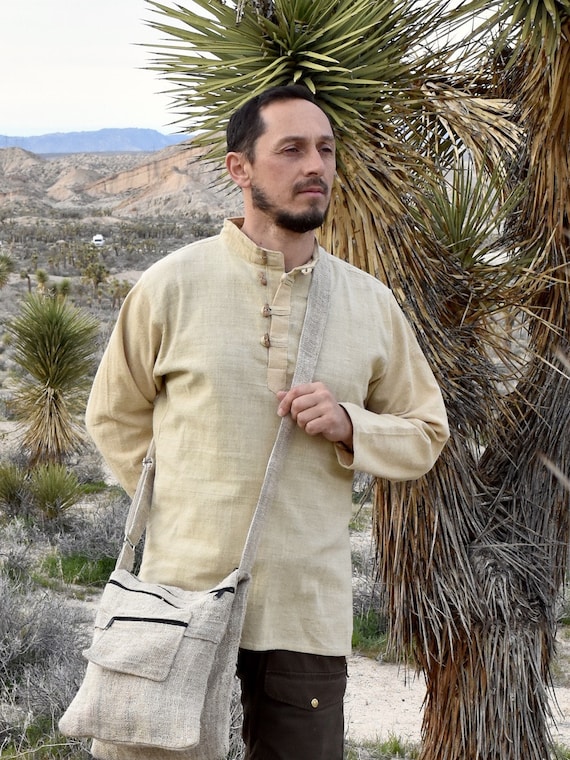Great Tips On Deciding On Bamboo Clothing
Wiki Article
What Are The Advantages Of Hemp Fibres With Low-Impact Clothing That Is Sustainable?
Hemp clothing made of low-impact fabric provides several environmental benefits in comparison to clothing made of cotton and synthetic fibers. Here are a few key environmental benefits of hemp clothing. Sustainable FarmingHemp - Hemp is a highly sustainable crop. It is a quick-growing plant that requires less water, pesticides or herbicides compared to other crops. Hemp thrives in different climates. It also is able to adapt to soil varieties.
Hemp requires less water as than cotton. Cotton is notorious for its heavy use of water. It makes hemp a much more water-efficient choice for clothing production.
Hemp is often cultivated without synthetic pesticides, herbicides or other chemicals. This helps reduce the ecological impact of chemical agriculture.
Hemp cultivation can improve soil health by preventing erosion and compaction. Hemp leaves the soil better prepared for future crops.
Hemp is biodegradable. It breaks down naturally over time, and it reduces the waste of textiles. Comparatively, synthetic fibers including polyester are able to decompose in a matter of many years.
Lower Carbon Footprint: The hemp fiber production generally has a smaller carbon footprint compared to synthetic materials. In addition, hemp is able to absorb carbon dioxide from the atmosphere as it grows, acting as a carbon sink.
Hemp clothing's durability as well as its longevity are widely known. High-quality garments made from hemp can last several years. This means that you won't have to replace them often and reduce the amount of waste.
Hemp plants naturally resist numerous pests. They do not require pesticides.
Hemp is a versatile material, since it can be utilized in a variety of applications, including bags, clothes and other accessories. It's a sustainable and fashionable fabric.
Regenerative Agriculture: Some sustainable farming practices integrate hemp into Regenerative systems that aim to improve and restore ecosystems, as well as produce crops. It can also have positive impacts on the natural environment.
It's crucial to keep in mind that while hemp offers several environmental benefits, the total sustainability of clothing depends on other aspects, such as the process of dyeing, transport, and consumer behaviors. As in all industries there could be differences in the production practices and guidelines. Therefore, in order to reap the maximum environmental benefits, it's advisable to select organic or sustainable hemp clothing. Follow the top hemp clothes for website recommendations including hemp pants womens, hemp fabric by the yard, hemp garments, hemp pants, patagonia hemp island pants, patagonia iron forge pants, patagonia hemp island pants, patagonia hemp pants, hemp apparel fabric, hemp sweatpants and more.

How Can Hemp Help The Carbon Sequestration Process And Sustainably?
Hemp fibers can contribute to the sequestration of carbon, sustainability and crop rotation practices in several ways and are therefore an environmentally green choice for production of textiles and agriculture Carbon Sequestration-
Hemp has a high growth rate. It matures between 70 to 120 days, based on the type of hemp and the conditions under which it grows. During the rapid growth phase hemp plants are able to absorb carbon dioxide (CO2) from the atmosphere through photosynthesis. This carbon uptake has the potential to significantly reduce CO2 levels by sequestering it.
Biomass Production- Hemp is known for its capacity to produce a lot of biomass. The dense foliage and long stalks of hemp produce massive amounts of organic matter. The biomass can be used to create organic carbon in soils or for various other purposes.
Sustainability:
Hemp crops need less herbicides and pesticides when compared to other crops like cotton. The hemp's natural resistance to many pests & diseases reduces chemical treatments. Organic hemp cultivation is a sustainable method for hemp cultivation because it doesn't use synthetic chemicals.
Hemp can be irrigated using only a small amount of water, in contrast to traditional cotton, which is water-intensive. This makes it more durable in areas with limited water resources.
Hemp roots are long and may aid in improving soil quality. The deep roots of the plant can lower runoff through stabilizing soil and enhancing soil structure. Hemp cultivating can also increase the microbial activity in soil. This improves the nutrient cycle and overall soil fertility.
Hemp can be integrated in crop rotation systems. Crop rotation is the process of rotating different crops within the same field for a period of durations of. This can help to break cycle of illness and pests, reduce depletion of soil and strengthen soil structures. Hemp's contribution to crop rotation contributes to the sustainability of farming practices.
Crop Rotation
Hemp is a good choice to include in system of rotation for crops alongside other crops like legumes, grains, or vegetables. This diversification will help maintain the health of soils. It will also reduce the risks of attracting pests and diseases that are particular to crops, and help promote a balanced nutrition cycling.
Soil Improvement- Hemp's deep roots can penetrate and aerate soil improving compaction as well as the infiltration of water. A better soil structure can be an advantage for crops that follow after hemp.
Summary Hemp fibers are beneficial to soil health, and are suitable for crop rotation as well as enhancing the carbon sequestration process and sustainability. They accomplish this by the rapid growth of biomass, minimal chemical use as well as their water efficiency and compatibility with crop rotation systems. Hemp farming is an environmentally sustainable farming practice. The fibers that result are eco-friendly and suitable for use in textiles and other uses. Take a look at the recommended hemp clothing tips for website recommendations including hemp underwear, patagonia iron forge pants, hemp cotton fabric, hemp garments, hemp sportswear, wholesale hemp fabric, hoodlamb jacket, patagonia iron forge pants, hemp bathing suit, hemp underwear and more.

What Are Some Of The Benefits That Bamboo Clothing Has For Comfort And The Environment?
Bamboo clothing is a great option for comfort and the environmental.
Softness Bamboo fabric is well recognized for its extraordinary suppleness. It is silky smooth texture which is a pleasure to touch. Bamboo clothing has a silky soft texture that makes it popular for intimate clothing, activewear, and loungewear.
Bamboo fibers breathe well and absorb moisture. Micro-gaps in bamboo allow air circulation and help keep your body cool. The moisture-wicking properties help to draw sweat away from the skin, reducing the sensation of dampness.
Thermoregulation- Bamboo clothes have excellent thermoregulatory properties. It helps keep you warm in colder temperatures by retaining warmth close to your skin. In hot temperatures, it will help you stay cooler by allowing excess heat and moisture to go away. The flexibility to various temperatures makes bamboo clothing suitable for year-round wear.
Hypoallergenic Bamboo fabric is naturally hypoallergenic. It's also soft for skin that is sensitive. It's less likely to cause skin irritation or allergic reactions.
Bamboo fibers have natural antimicrobial properties that can assist to stop the growth of odor-causing bacteria. This is a factor in the freshness and comfort of bamboo clothing, even in exercise.
Environment-
Sustainability- Bamboo is a sustainable and renewable resource. Bamboo is among the fastest growing plants on the planet. It thrives with a minimum of water, and does not require pesticides. Bamboo can grow from the roots, making it possible to harvest the plant without damaging the plant.
Bamboo is naturally water-efficient. It can grow with little irrigation, and is often planted with rainwater only. This reduces the negative environmental impact of water consumption in agriculture.
Biodegradability - Bamboo clothing decomposes naturally after a period of time, even before it is thrown away. This feature reduces waste that is not biodegradable textiles dumped in landfills.
Carbon Sequestration. Bamboo is a great plant to capture CO2 in its rapid growth. In turn, bamboo cultivation is a carbon sink, helping to combat climate changes through reducing greenhouse gas levels.
Chemical Reduction- The manufacture and processing of bamboo fabrics typically require less chemicals than some other textiles. This helps reduce the impact on the environment that textile manufacturing has.
Closed-Loop Manufacturing Certain manufacturing methods for bamboo fabrics utilize closed-loop production, which recycles and reuses water and chemicals to reduce waste and environmental impact.
The environmental impact of bamboo clothes can vary depending on how they are produced and whether the bamboo is from forests that are sustainably and properly managed. If you're looking to reap the most environmental benefits from bamboo clothes, make sure you choose environmentally-friendly and ethical production methods. Check out the top rated bamboo clothing for blog info including bamboo sweater, bamboo cotton t shirts, bamboo activewear, bamboo polo shirts, bamboo fitness clothing, mens boxer shorts bamboo, bamboo baby pajamas, bamboo apparel wholesale, bamboo t shirts wholesale, bamboo sun shirt and more.
